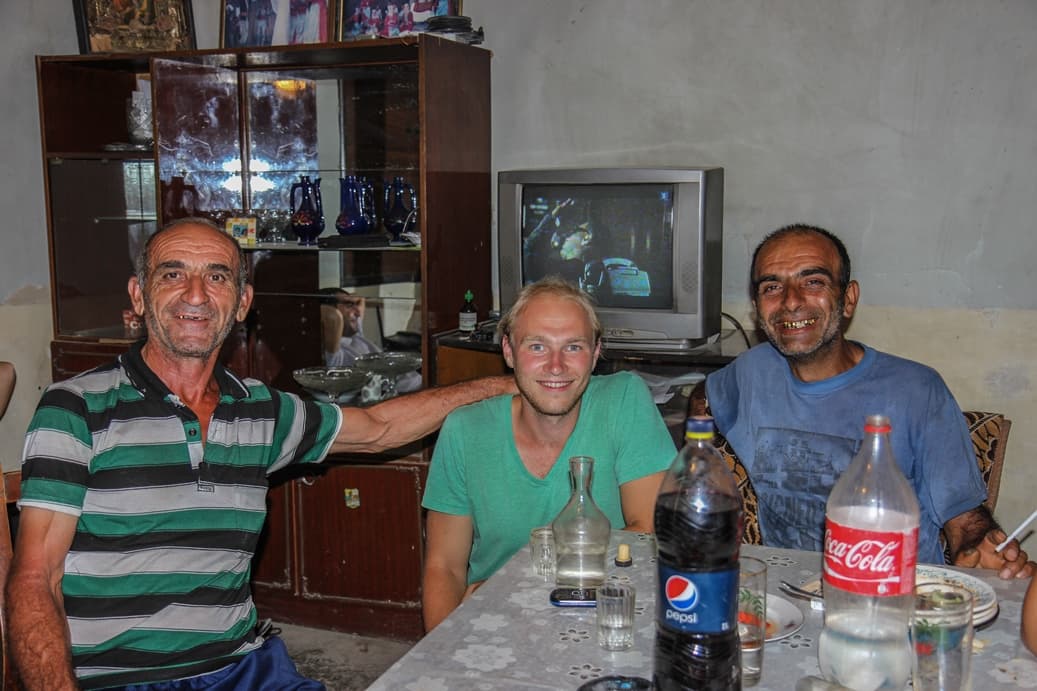Our journey through Iran has ended, and after traveling across half of Armenia, we’ve arrived in the renowned village of Areni. I must admit, my initial plans to explore Armenian wines, especially their fruit-based alcoholic beverages, were quite ambitious.
Let’s begin.
As we drove, the driver pointed to a cave on the left and said, “This is where the world’s oldest winery and the oldest shoe were discovered.” The mention of the shoe was intriguing, but my attention was already captured by the word “wine.”
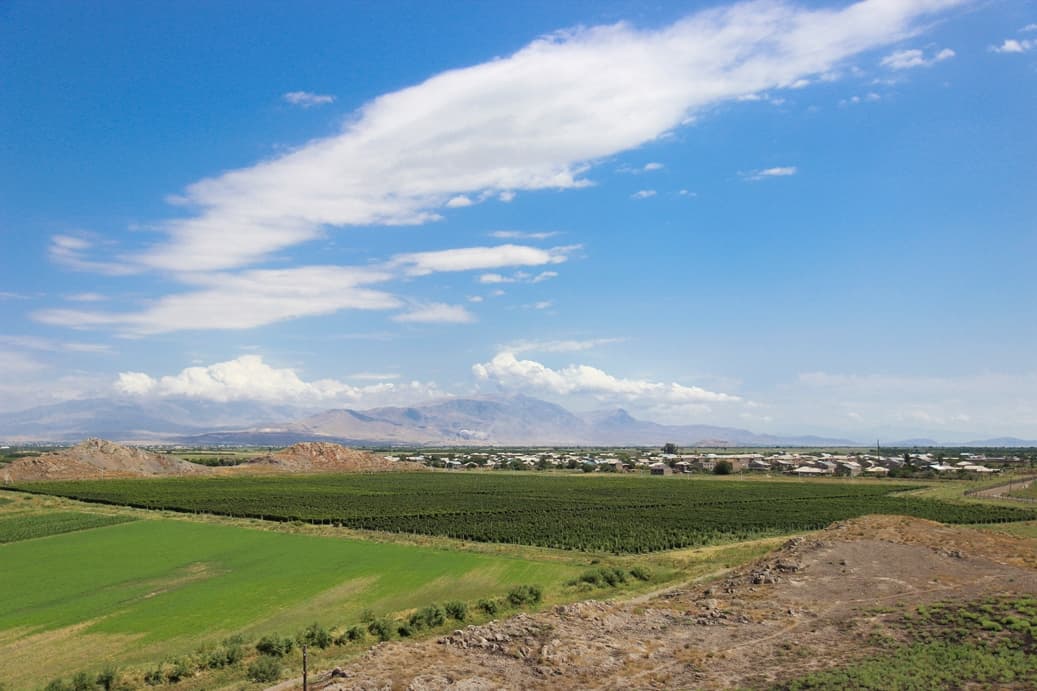
A few hundred meters down the road, we came across rows of stalls lining both sides, overflowing with fruits and wines of every flavor and size — raspberry, blackberry, pomegranate!
“We should probably stop here,” I said, already imagining the taste on my lips.
We pulled over near a roadside factory: Areni Winery. Hoping to sample a few wines, I approached the sellers, but their response was blunt: “We are not a charity organization!” Shocked by the rudeness, I decided to cross this place off my list.
The locals advised us to head deeper into the village to a place called "Areni Country," a factory once owned by the former village chairman, Mikael.
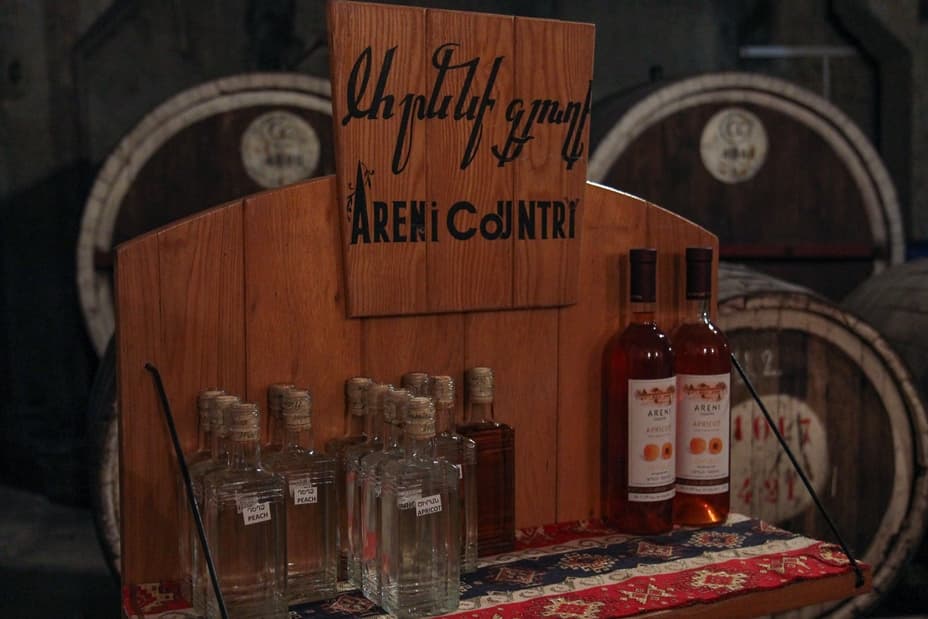
Relaxed and leaning against the wall, Mikael didn’t hesitate when we asked him to show us his property: a recently purchased factory and cellar.
His winemaking journey began in 1994. The village’s pride is the red grape variety Areni, also known as Areni Noir. It grows in almost every villager’s garden, and nearly everyone in the village makes wine. According to the locals, their wines contain no chemicals or additives—just natural grape juice, aged on the pomace, then filtered and bottled in simple plastic containers.
At the start of his journey, Mikael knew little about winemaking. There was no internet, and no libraries nearby to consult. Instead, he went door-to-door, learning from the elders who shared their knowledge and gave advice.
After a few years, Mikael released his first bottles under a brand he calls his “child.” His wines caught the attention of American tasters visiting the region. Impressed, they invited him to participate in an international competition.
“And so I, from a small village, went far, far away,” he recalls with a smile.
Things progressed well for Mikael, but in 2013, his co-founder and close friend moved to Russia, forcing Mikael to sell his first factory. Now, on newly purchased land, a fresh complex is slowly taking shape. The plans include a hotel for wine tasting and relaxation, along with a garden interwoven with vineyards. Today, Mikael oversees about 12 hectares of land.
Mikael is passionate about experimentation. He still keeps a barrel of his very first wine. Although he doesn’t produce large volumes, he dedicates much of his time and space to experimenting with blends, grape varieties, and barrels. In his current setup, there are barrels that hold up to one and a half or even two tons of wine. Modern laboratory techniques have no place here; everything is crafted traditionally.
For anyone seeking something new, I highly recommend visiting this place first.
“Areni Country” wines are now exported to Germany, Poland, and Russia. All of the wine is aged in barrels made from Nagorno-Karabakh oak, which are cleaned every five years by professional coopers. Coopers, a rare and skilled trade, are essential here—there are only three in the entire region.
After hearing Mikael’s stories, we were invited to taste the wine and share our impressions.
The first wine offered was the “Experimental Areni,” aged for five years in oak barrels—a period considered excessive in winemaking. The result sparked mixed emotions. At first, it had a sharp, woody taste, almost like brandy. Only after a moment did the grape and subtle fruit notes emerge. While it wasn’t to my taste, it was undeniably interesting—exactly what you’d expect from an experiment.
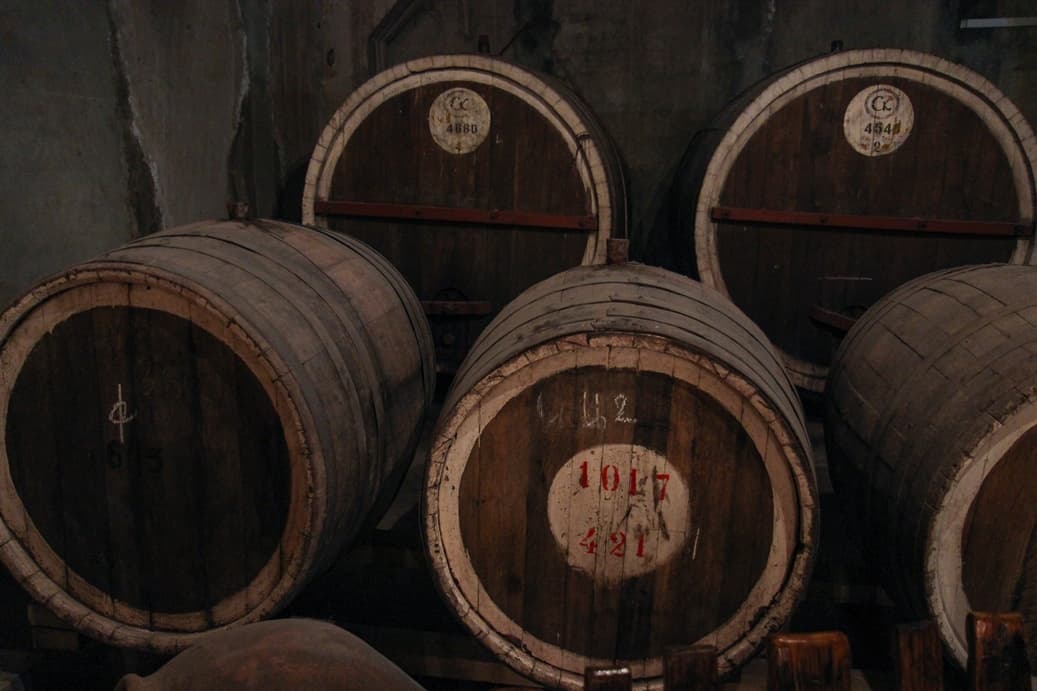
The second surprise was a wine made from Khajji grapes. Although the grape is white, fermentation takes place with the skin and stone intact. This process gives the wine a pink-straw color and a distinctive bitterness, along with heightened acidity. It’s also said to have beneficial properties.
After sampling these first two “specialties,” we tried about ten more, purely for enjoyment. We wanted to get a better sense of the range of flavors. Among the options were raspberry, pomegranate, blackberry, and peach wines, as well as a variety of distillates. Taste is subjective, but we found them all delightful.
After a long and fascinating conversation, finding a place to set up our tent proved challenging. Outside, the streets were silent and dark, with no lights to guide us. Thankfully, there was no need to search. Mikael kindly offered us a spot to pitch our tent on the factory premises, nestled among the scattered barrels.
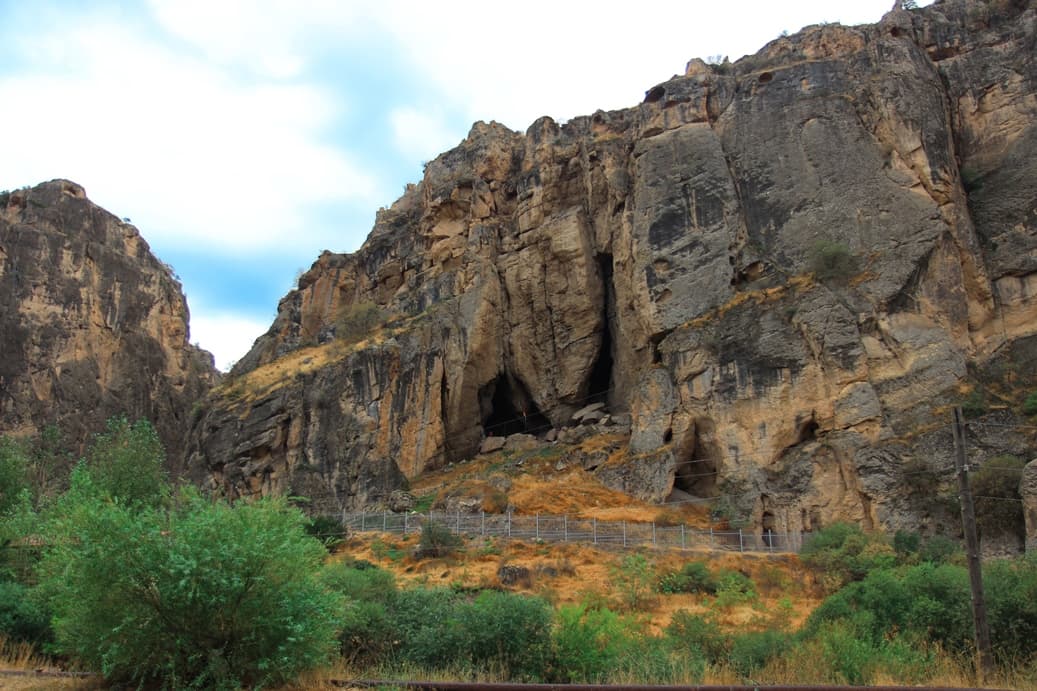
The next day, we left our backpacks inside the factory and set off along the misty road to the “Areni-1” cave.
On the way, we stopped to chat with a few local winemakers and taste the wines they had for sale.
The cave is located near the village entrance, with a really small entrance fee.
Archaeological excavations at the site revealed remnants of material culture that confirm Armenia’s 6,000-year history of winemaking. I saw the ancient wine press and the pitchers once used to store wine. It was an incredible experience to witness such history firsthand.
And that’s all about the wine village of Areni.
Next, we’re heading to Yerevan. Would you care to join us?
